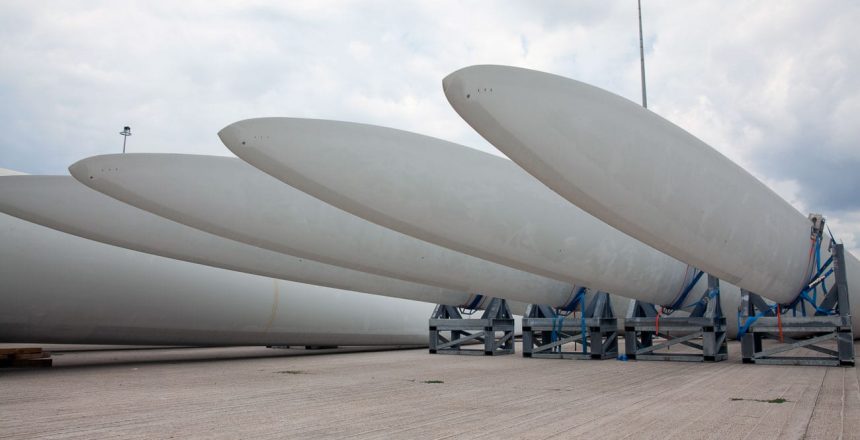Does a change in a wind turbine blade dielectric decrease over time? Does it affect the performance of the lightning protection system?
In this article we’ll discuss why a wind turbine lightning protection system should not rely solely on a blade’s dielectric strength as measured right off the assembly line…and how to protect your system.
Wind Turbine Blade Dielectric Will Change Over Time…For the Worse
As explained in this excellent article over at Windpowerengineering.com, blade length has been increasing by 6.5 feet per year on average over the last 10 years. These larger designs require more thought and more robust lightning protection. A larger blade means much higher manufacturing cost, delivery cost and repair complexity–and requires a much more robust lightning protection system.
It’s important to keep these blades running as much as possible, with little downtime.
Wind turbine blade lightning protection systems are tested on brand new blades. When these blades are tested right off the assembly line, their dielectric strength is as good as it will ever be.
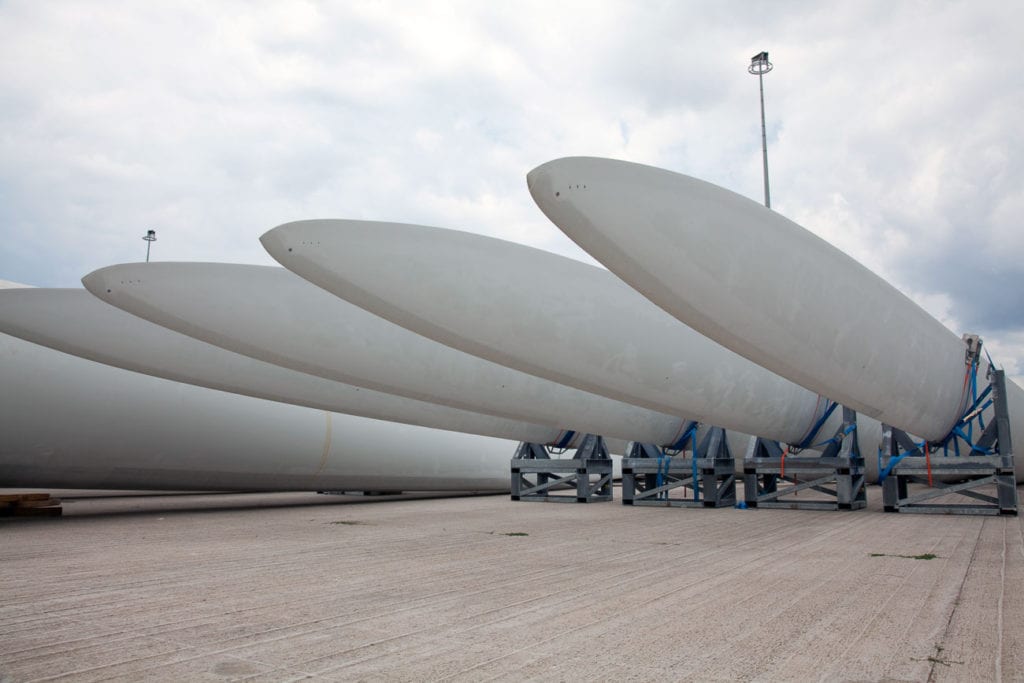
The problem is that wear and tear will change the blade dielectric over time, and these changes can happen quickly. When designing a lightning protection system, it’s important to design a blade that doesn’t rely solely on the blade dielectric.
Changes to the Wind Turbine Blade Dielectric Lead to Increased Risk of Damage
Weathering and exposure to lightning strikes will degrade the blade, stress and make it electrically porous. This porosity leaves your blade susceptible to serious lightning damage.
The lightning receptor and down conductor is NOT enough to ensure consistent, safe operation. A significant amount of the blade tip is unprotected, and this is where damage often occurs.
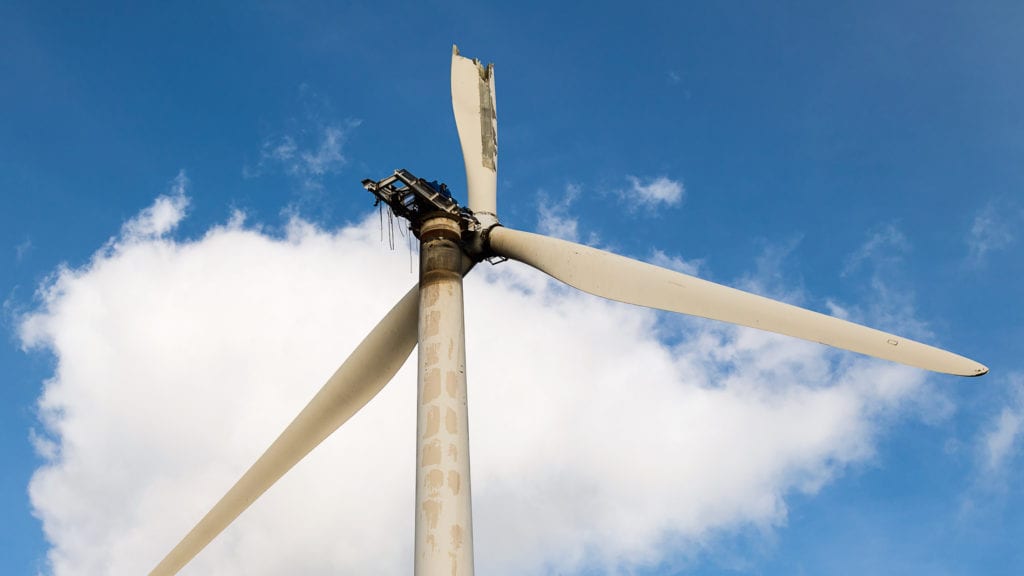
To give a blade the protection it needs, a more robust lightning protection system is needed.
StrikeTape Segmented Lightning Diverters Provide Additional Protection
Using a Weather Guard StrikeTape segmented lightning diverter on a wind turbine blade will direct lightning where it needs to go regardless of the dielectric strength of the blade. This is why it’s an excellent long-term lightning protection solution.
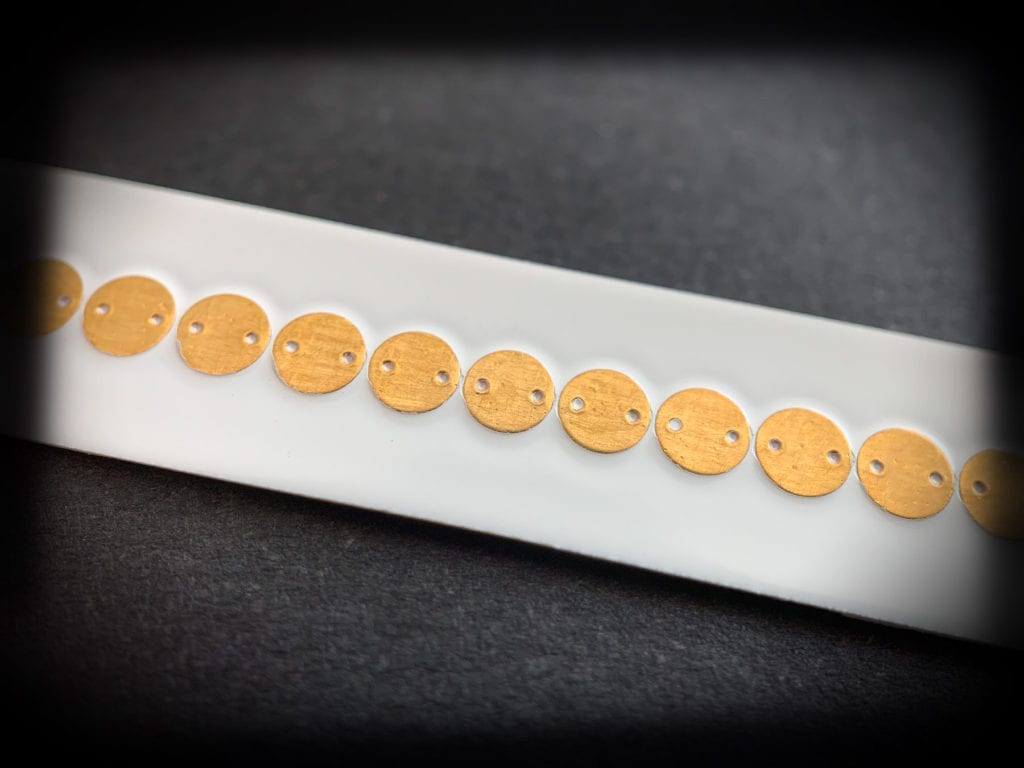
A StrikeTape lightning diverter system utilizes proprietary edge sealants that provides ultra-durable wear resistance against rain erosion and the harsh conditions wind turbines face.
How Lightning Diverters Protect Turbine Blades
Lightning will take the path of least resistance to the down conductor, even if this means going through the composite material–which causes significant damage to a blade.
The lightning receptor on the tip of the blade provides a good attachment point for a lightning strike, but it’s often not enough. The receptor typically does not go far enough to the tip of the blade, leaving a significant portion of the blade tip exposed. The wind turbine blade dielectric is not enough, and we need as much of the tip protected as possible.
Especially as wear and tear on a turbine blade increases, the likelihood increases that a strike will penetrate the blade without first entering through the receptor.
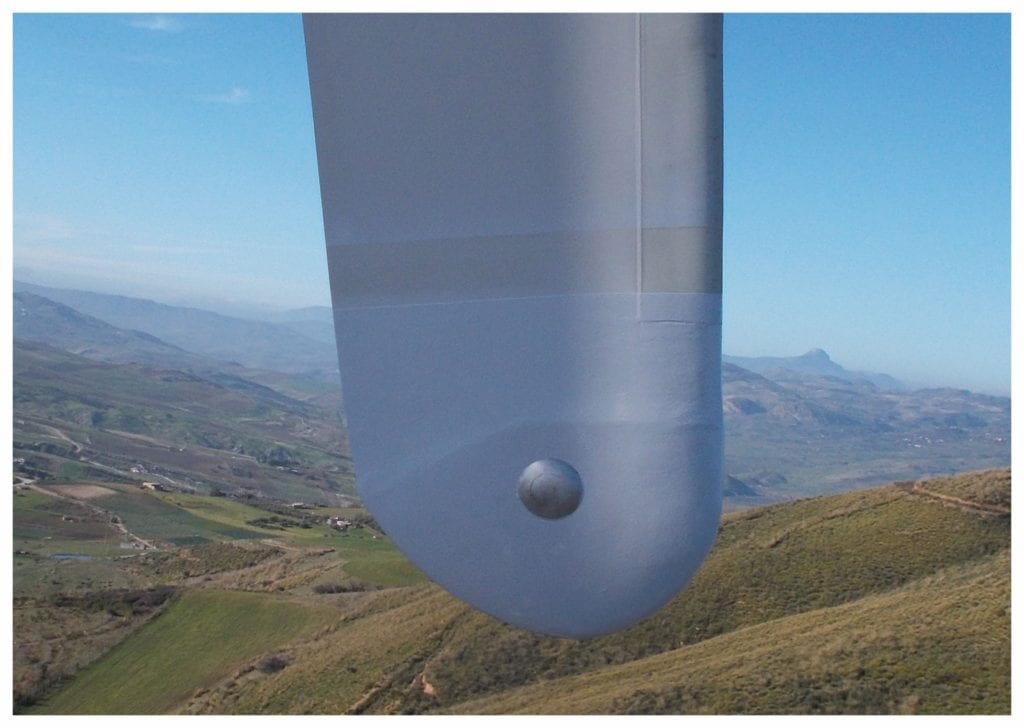
A StrikeTape segmented lightning diverter will give lightning a highly-conductive attachment point that extends farther on the blade tip than the receptor. When lightning is near, StrikeTape creates an ionized channel towards the receptor.
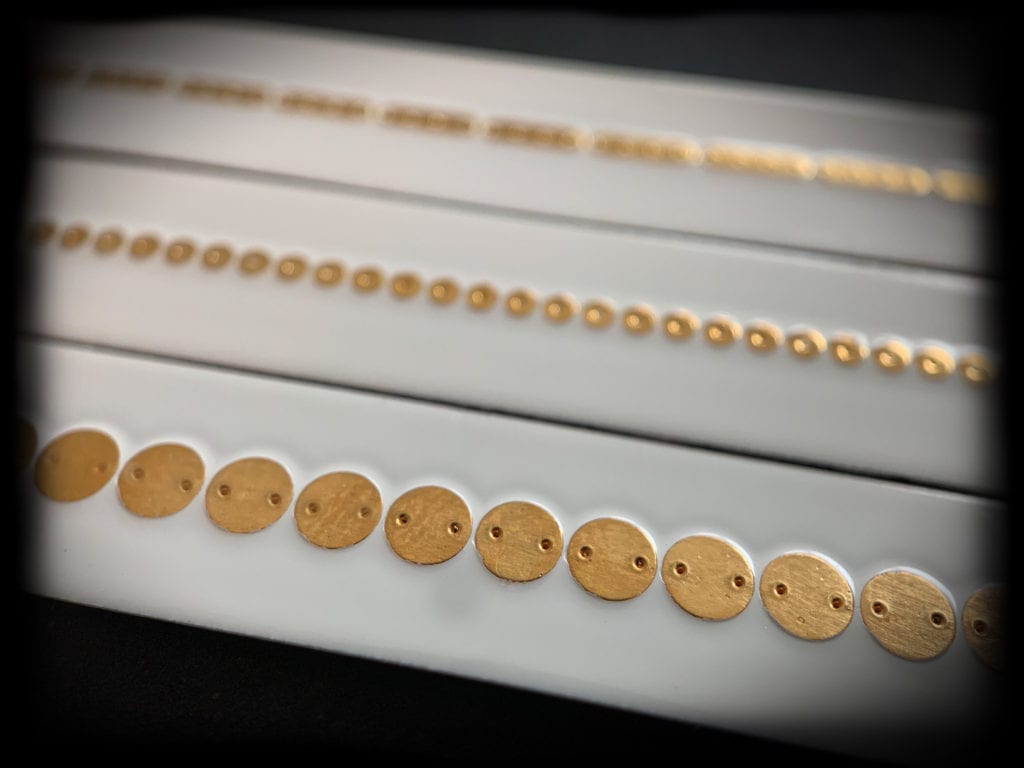
This ionized channel over (but not through) the segments keeps energy off the blade surface. This protects the blade materials and guards against critical damage.
Want to Learn More? Schedule a Call with Us
Schedule a call with us today and learn how we can help you.
We not only provide the world’s best lightning protection, but also can guide you through your blade design or retrofit.
We at Weather Guard make lightning protection easy. Design, parts and easy installation–we’ve got you covered.

